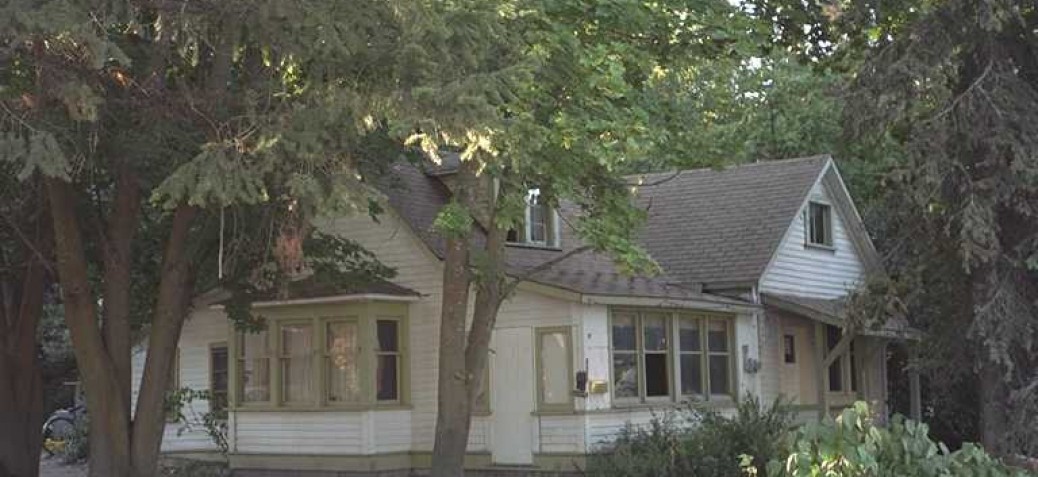Surtees House
Place Description
The historic place is the rural, 1.5-storey wood-frame Surtees House, built around 1912 at 4639 Lakeshore Road, in Kelowna's Mission Sector. The Surtees House is closely associated to the dairy barn on the same property.
Heritage Value
This house and barn have varied and important heritage value. In its first phase the house was what is probably the only remaining 'sin' centre from the area's early days, and is linked to the building of the Kettle Valley Railway. The second phase has aristocratic connections, reflecting the strong English character of Okanagan Mission. In its third phase the house accommodated a 'war bride' and highly respected museum curator.
The first part of the house, what now comprises the entrance porch and two rooms facing the lake, was built around 1912 on land owned by J.H. Baillie. It was occupied by the Ritz Cafe, which flourished for a year or two while Okanagan Mission was the supply base for the more than 2,000 workers building the Hydraulic-Penticton stretch of the KVR. As described by a later occupant of the house, the establishment 'was operated by two "ladies" who catered to all appetites.' When construction of the KVR was completed, the Ritz Cafe, operated by Messrs. Edgelow and Lister, closed 'for lack of business.'
About 1919, after the end of the First World War, the house and property were bought from Baillie by Allen V. Surtees, a young Englishman from a well-off family. His sister Molly was sent over from England to keep house for him, but she reportedly refused to move in because of a large pack rat. Surtees fixed up his house, about 1924 adding the rear portion. He courted and married Ishbel Marjoribanks of Coldstream, the niece of Governor General Lord Aberdeen and Lady Aberdeen and granddaughter of Baron Tweedmouth. Surtees was on the Okanagan Mission cricket team in 1924, and was a trustee of Okanagan Mission School in the 1920s.
Ishbel Surtees inherited two small fortunes. The first helped to build the Surtees' 'Greenways' dairy barn in 1927. Ishbel's second fortune, inherited from her grandfather, Baron Tweedmouth, was invested in building the Three Gables Hotel in Penticton and in the less successful Kelowna oil wells. She died just before the Second World War. Allen Surtees went into service in the war, and the house and dairy farm were sold to E. Coelan, later passing to G. Coe.
In the early 1960s the property was bought by Allen Surtees' son John, who had been born there. He met and married his wife Ursula in England, and in 1946 she came out with their infant daughter on the Queen Mary to rejoin him, one of thousands of 'war brides'. After some years at Penticton, they returned to Kelowna, when John bought his childhood home.
Ursula Surtees involved herself in local heritage work, and in 1968 she became curator of the Kelowna Centennial Museum, a position she held until her retirement. About 1993, after her husband's death, she sold the property. It is currently owned by the City, vacant, and boarded up.
Character Defining Elements
Key elements that define the heritage character of the Surtees House include:
-1910 vernacular wood frame house without stylistic pretensions, and rural character
-1.5-storey, “L”-shaped plan with enclosed ground floor rooms at the angles
-Cross-gable roofs, with hipped roofed dormer facing the front
-3 corbelled brick chimneys
-Entrance porch covered by a shed roof and supported by four square posts with brackets
-Room to left at entrance covered by a shed roof
-Left side has hipped roof over rectangular projecting one-storey bay window
-Horizontal drop wood siding
-Wood sash double hung windows
-Exposed “Tudor” style wood ceiling beams in living room
-House and barn are in a wooded setting, with large trees, mostly pines, which form a backdrop to the buildings
-Property is City-owned and at the beginning of a linear park




